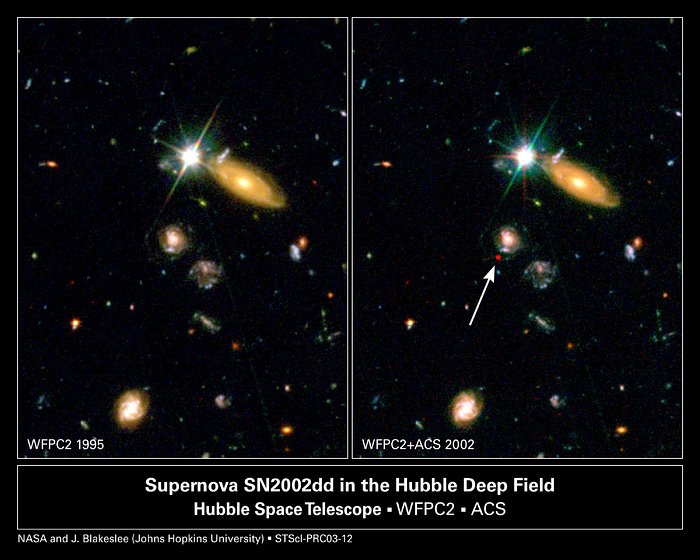Far-Flung Supernova Sheds Light on Dark Universe
[Left] - A Hubble Space Telescope image of a portion of the Hubble Deep Field North as originally photographed in 1995 with the Wide Field Planetary Camera 2. [Right] - A composite image of the same field as imaged by Hubble's Advanced Camera for Surveys (ACS), combined with the original WFPC2 image. The ACS observations were made in May and June 2002. The red spot is the glow of a very distant supernova captured exploding in the field. The supernova is estimated to be 8 billion light-years away. The supernova appears deep red in this composite image because it was photographed by the ACS at far-red wavelengths. Distant supernovae are used by astronomers to fill in the blank region where the universe's rate of expansion switched from deceleration due to gravity to acceleration due to the repulsive force of 'dark energy.'
Credit:About the Image
About the Object
| Name: | HDF-N, SN 2002DD |
|---|---|
| Type: | Early Universe : Star : Evolutionary Stage : Supernova |
| Distance: | z=0.95 (redshift) |
| Category: | Stars |
Colours & filters
| Band | Wavelength | Telescope |
|---|---|---|
| Infrared I | 775 nm |
Hubble Space Telescope
ACS |
| Infrared Near-IR | 800 nm |
Hubble Space Telescope
ACS |
| Infrared Z | 850 nm |
Hubble Space Telescope
ACS |
| Infrared J | 1.1 μm |
Hubble Space Telescope
NICMOS |
